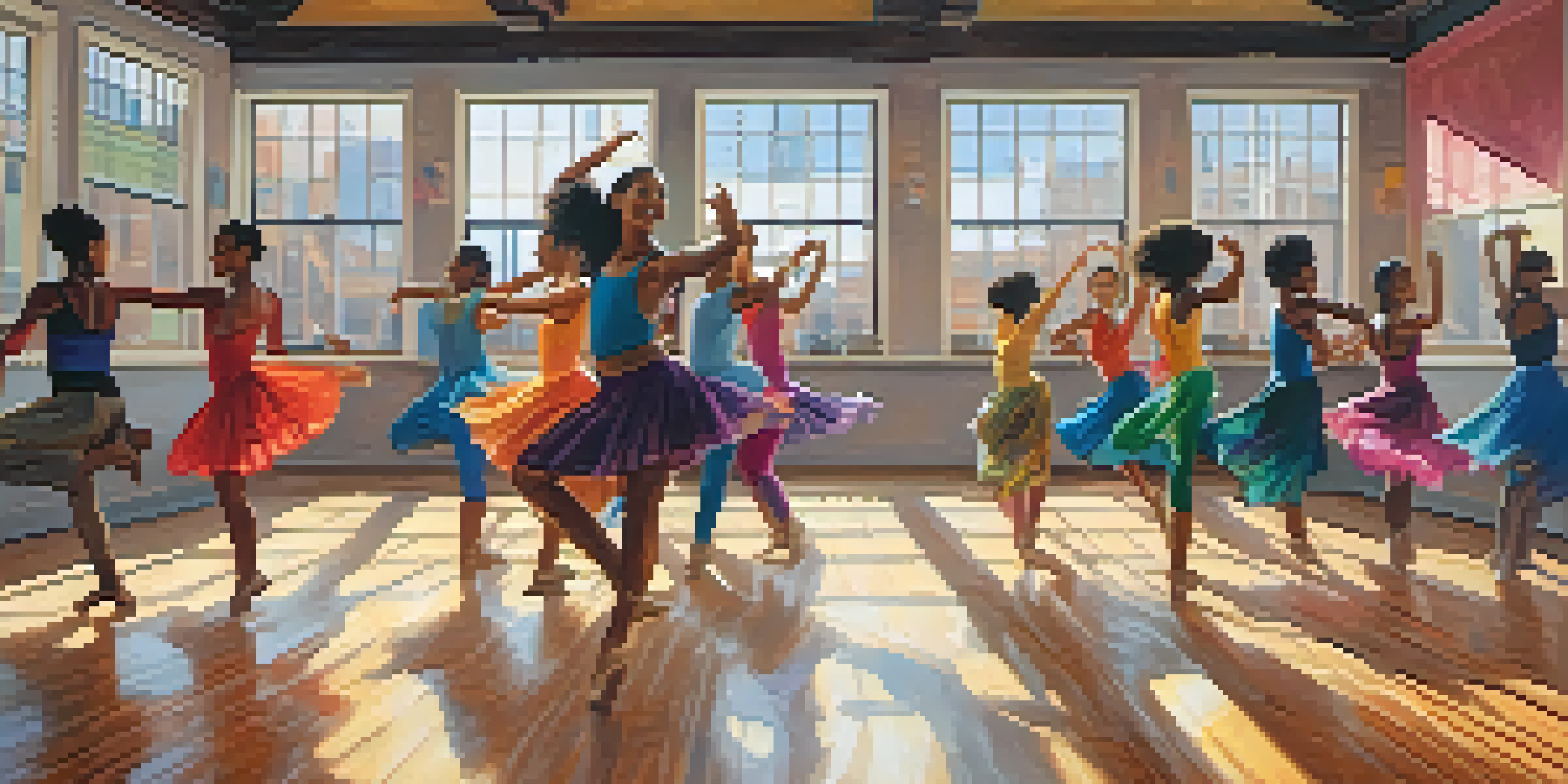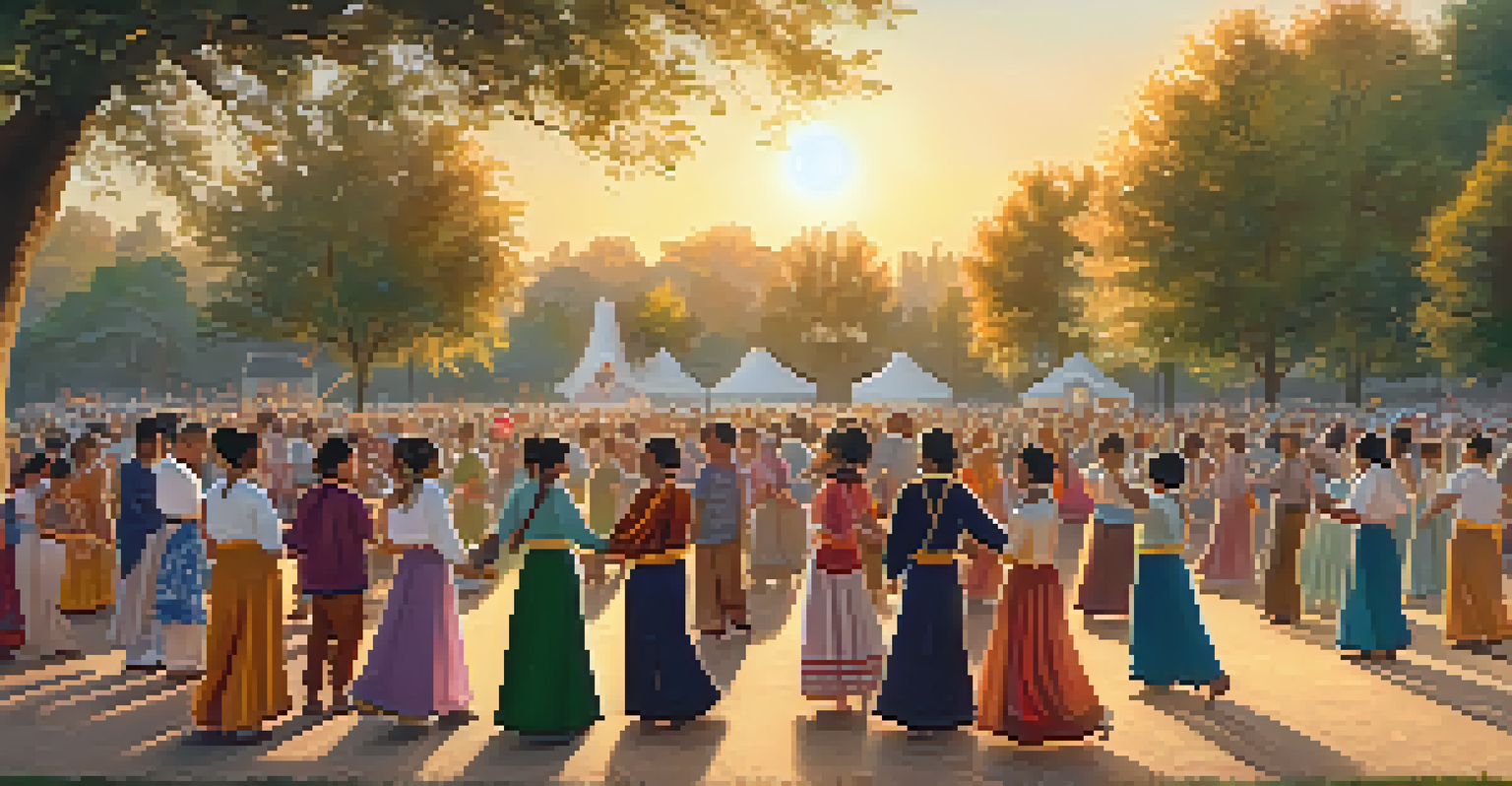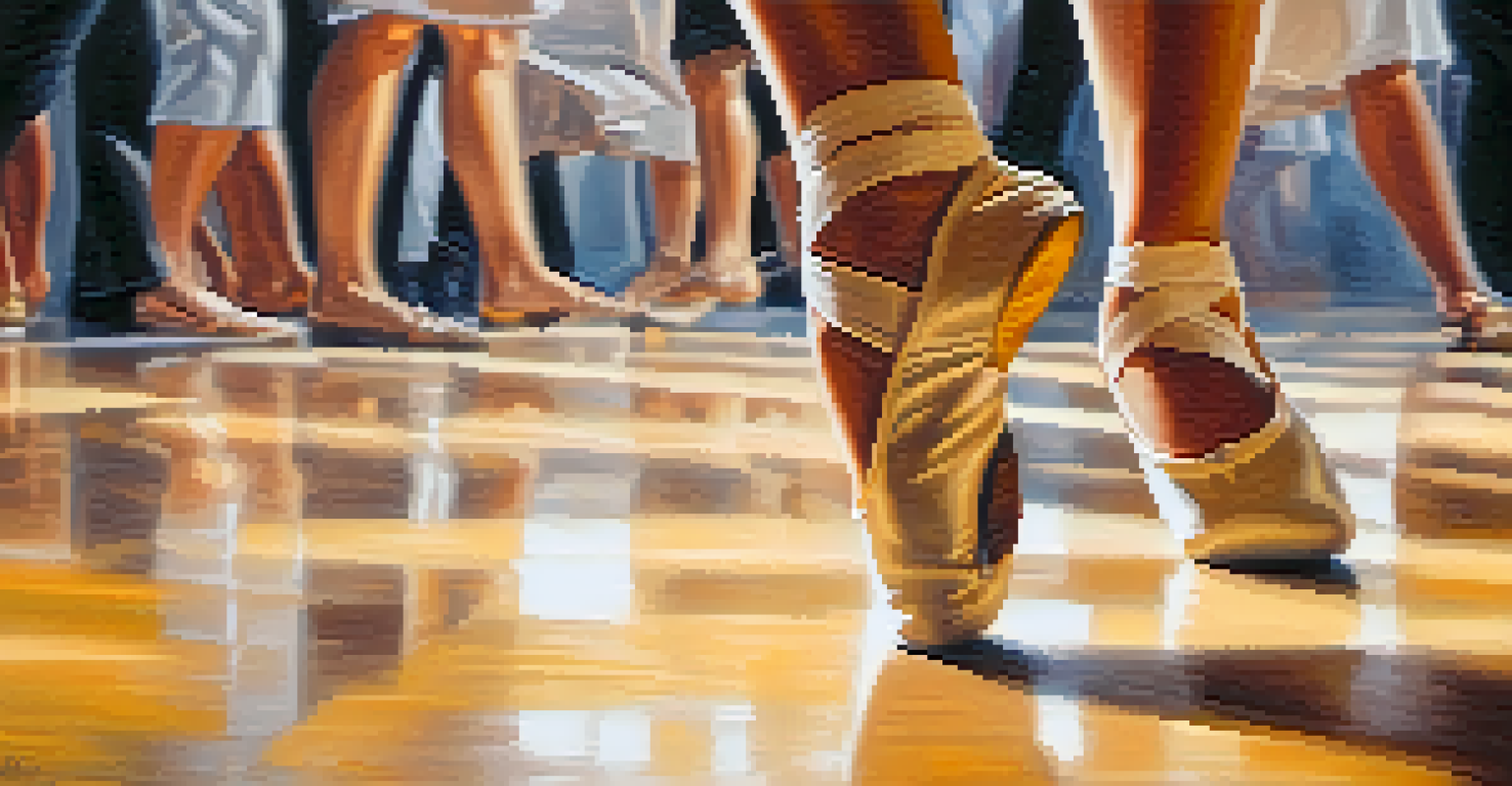The Influence of Dance on Personal Identity Formation

Understanding Dance as a Form of Expression
Dance is a powerful medium through which individuals express emotions and thoughts that words often cannot capture. Whether it's the joy of a celebratory dance or the sorrow in a slow waltz, movement allows for a visceral connection to one's feelings. This expression can lead to a deeper understanding of oneself, fostering personal growth and self-acceptance.
Dance is the hidden language of the soul.
For example, a dancer may find liberation in improvisational styles, where they can explore and express their individuality without constraints. This sense of freedom often helps them connect with their true selves, paving the way for personal identity formation. Ultimately, the act of dancing becomes a journey of self-discovery.
Moreover, through dance, individuals can communicate their unique stories and experiences, which reinforces their identity. By embracing their personal narratives through movement, they not only affirm who they are but also inspire others to reflect on their identities.
Cultural Influences of Dance on Identity
Dance is deeply rooted in cultural traditions and practices, making it a significant factor in shaping personal identity. Different cultures have unique dance forms that carry historical significance and reflect societal values. Engaging with these dance styles can create a sense of belonging and connection to one's heritage.

For instance, a person participating in traditional folk dances may feel a stronger connection to their ancestry and cultural roots. This connection can enhance their sense of identity, as they embrace the rich tapestry of stories and traditions that shape their community. Such experiences can deepen their appreciation for their cultural background.
Dance as Self-Expression
Dance provides a unique way for individuals to express emotions and explore their identities.
Moreover, as individuals explore various cultural dance forms, they often find common ground with others, fostering intercultural dialogue and understanding. This exchange enriches personal identity, enabling individuals to weave diverse cultural influences into their own narratives.
Dance Communities and Their Role in Identity Formation
Joining a dance community can significantly impact one's sense of identity. These communities provide a supportive environment where individuals share a common passion, fostering camaraderie and acceptance. Being part of a group that celebrates dance can enhance personal confidence and encourage self-exploration.
Dance is the joy of movement and the heart of life.
For example, a young dancer who practices alongside peers may develop strong friendships that reinforce their identity as a dancer. The collective energy and shared experiences within the group can validate their passion, making them feel seen and understood. This validation often leads to personal growth and a clearer sense of self.
Additionally, dance communities often celebrate diversity, allowing members to explore different styles and expressions. This exposure helps individuals navigate their own identities while appreciating the richness of others' experiences, ultimately contributing to a more profound understanding of themselves.
The Psychological Benefits of Dance on Identity
The psychological benefits of dance can also play a crucial role in personal identity formation. Engaging in dance can reduce stress, boost self-esteem, and promote emotional well-being. These positive effects can lead individuals to feel more confident and secure in their identities.
For instance, dancing can serve as a therapeutic outlet for individuals dealing with anxiety or depression. The act of moving rhythmically often allows for the release of pent-up feelings, leading to a clearer mind and a better understanding of oneself. As people become more in tune with their emotions, they can embrace their identity more fully.
Cultural Roots Shape Identity
Engaging with diverse dance forms connects individuals to their cultural heritage and enhances their sense of belonging.
Furthermore, dance encourages mindfulness, as individuals focus on their movements and expressions. This mindfulness helps cultivate self-awareness, allowing individuals to recognize their strengths and areas for growth. In this way, dance not only shapes identity but also enhances overall mental health.
Dance as a Tool for Social Change and Identity
Dance has historically been a medium for social change, influencing personal and collective identities. Movements like hip-hop or contemporary dance often address societal issues, giving individuals a platform to express their beliefs and experiences. This engagement with social themes can shape how dancers view themselves and their roles in the community.
For example, dancers participating in social justice initiatives may find that their art becomes a vehicle for activism, strengthening their identity as advocates for change. This sense of purpose can empower individuals, helping them connect their passions with broader societal narratives. As they express their views through dance, they create a unique identity that reflects their values.
Moreover, dance can unite people from different backgrounds, fostering solidarity and shared identity. By coming together to create or perform, individuals can build connections that transcend cultural and social barriers, further enriching their sense of belonging.
Personal Identity Through Dance Education and Training
Dance education plays a pivotal role in shaping personal identity. Through structured training, dancers develop their skills and artistic voices, which can significantly boost self-confidence. This journey of learning and improvement helps individuals understand their potential and aspirations, contributing to their sense of self.
For example, students in a dance program often discover their strengths and preferences in different styles, allowing them to carve out their unique identities as artists. This exploration can lead to profound realizations about their passions and goals, reinforcing their commitment to dance. As they evolve, they embrace the identity of a dedicated dancer.
Communities Foster Identity Growth
Being part of a dance community encourages personal growth and strengthens one's identity through shared experiences.
Additionally, dance education often emphasizes collaboration and teamwork, teaching students the value of relationships and community. Such experiences can shape an individual's identity beyond just dance, instilling essential life skills and fostering a sense of responsibility and empathy.
The Future of Dance and Its Ongoing Influence on Identity
As dance continues to evolve, its influence on personal identity remains significant. The rise of social media and digital platforms has transformed how individuals engage with dance, allowing for greater accessibility and diversity in styles. This shift opens up new avenues for self-expression and identity exploration.
For instance, online dance challenges and tutorials can inspire people of all backgrounds to share their interpretations of dance, enriching the global dance community. This democratization of dance encourages individuals to explore their identities in innovative ways, transcending traditional boundaries and fostering creativity.

Looking ahead, the ongoing fusion of different dance styles and cultural influences will further shape personal identities. As individuals embrace this evolution, they will continue to find new ways to express themselves, ensuring that dance remains a vibrant and essential part of their identity.